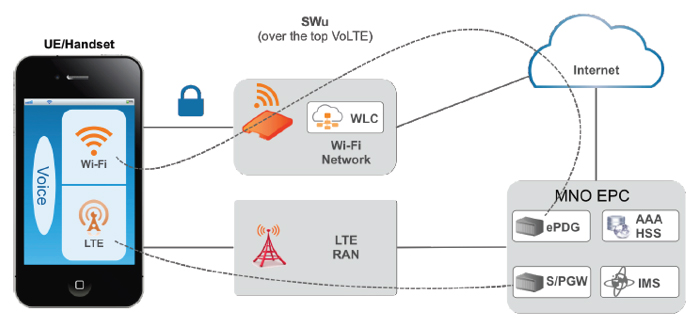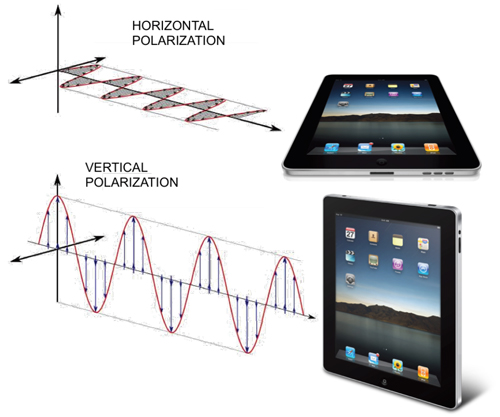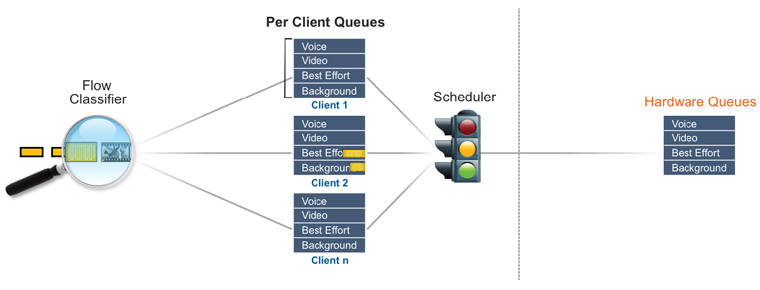
Wi-Fi Calling
Using Smart Wi-Fi to Deliver a Secure and Seamless Carrier-Class Wi-Fi Calling Experience
 Wi-Fi calling has been around for many years in many forms including Skype and Lync, both of which have seen great success in the market. Lync has proven to be very successful in business applications and RUCKUS equipment is now Lync certified. In the service provider space the industry now has a very strong solution based on the GSMA’s IR-92 profile for VoLTE. Unlike over-the-top services such as Skype and Lync, this approach uses the native dialer on the smartphone, and connects to the IMS complex in the MNO data center.
Wi-Fi calling has been around for many years in many forms including Skype and Lync, both of which have seen great success in the market. Lync has proven to be very successful in business applications and RUCKUS equipment is now Lync certified. In the service provider space the industry now has a very strong solution based on the GSMA’s IR-92 profile for VoLTE. Unlike over-the-top services such as Skype and Lync, this approach uses the native dialer on the smartphone, and connects to the IMS complex in the MNO data center.
This implementation uses Internet Protocol Security (IPsec) on smartphones to create a secure connection to the MNO data center. The voice traffic is encrypted in the smartphone before being sent across the Wi-Fi network, and decrypted by the ePDG in the data center. The decrypted traffic is then tunneled into the EPC using GPRS tunneling protocol (GTP).
RUCKUS Smart Wi-Fi technologies enhance the Wi-Fi Calling experience, ensuring a service provider’s successful deployment in locations with cellular coverage issues:
- Indoor environments with coverage holes
- High-density public venues
- Video calling that demands higher network capacity
- Roaming outside of the home network

Enhancing Wi-Fi Radio Signal
A better Wi-Fi Calling experience comes from having a stronger radio signal.
RUCKUS BeamFlex Adaptive Antenna Technology dynamically adjusts the antenna pattern for each and every packet transmitted. It enhances the network’s downlink performance while mitigating interference by directing more RF energy towards the intended receiver, adding up to 6 dB of additional receiver gain. This is especially important in high-capacity density public venues.
RUCKUS BeamFlex+ further enhances BeamFlex technology by using PDMRC to add up to 5dB of additional gain on the uplink.
Prioritizing Voice Traffic
IR-92 based Wi-Fi Calling applications encrypt the airlink, which can make it hard to prioritize voice flows. RUCKUS SmartCast utilizes type-of-service (TOS) and heuristic algorithms to detect and prioritize encrypted voice or video flows by looking at the size and frequency of the packet flow. This greatly enhances the reliability and performance of Wi-Fi Calling.
Preparing the Network to Offer a Carrier-Class Wi-Fi Calling Experience
So what must service providers do to insure that their Wi-Fi network is ready to support a carrier-class Wi-Fi Calling experience? There are several elements to a successful deployment.
On the Importance of a Strong Radio Signal
Everything starts with a really strong radio signal. To this end, Adaptive Antenna Technology was developed for the transporting of delay-sensitive video and voice traf!c over Wi-Fi.
Adaptive Antenna Technology provides a much stronger signal as seen by the user's smartphone, which equates to a better modulation and coding scheme (MCS). A better MCS means higher data rates, and a higher data rate means it takes less time to send a specific amount of data (or voice) allowing client stations to spend less time accessing or !ghting for access to the Wi-Fi medium. It also reduces contention for the RF channel, as well as reducing the likelihood of collisions (increased jitter), frame loss, or packet retransmissions (increased latency). In other words, providing a stronger signal at the smartphone increases the overall airtime efficiency of the device for sending voice as well as other types of traffic.
Enhancing Downlink Performance with BeamFlex Adaptive Antenna Technology

Adaptive Antenna Technology does this by dynamically adjusting the antenna pattern for each and every packet transmitted. This is under the control of sophisticated software and has the result focusing RF energy towards the intended receiver. This results in up to 6 dB of additional signal gain as seen by the user's device.
In addition, smart antennas help mitigate interference by only directing RF energy towards the intended receiver and not simply blasting it everywhere. The impacts from the increased receiver gain and interference mitigation are cumulative and quite pronounced in dense deployments, such as office buildings or high-capacity public venues.
Another important innovation benefiting Wi-Fi Calling is the ability to enhance the uplink signal from the client to the AP by receiving the client's signal on both horizontally and vertically polarized antenna elements. When polarization diversity is combined with maximal ratio combining (PD-MRC), the end result can be up to 5 dB of additional gain. This is especially important when considering single stream/single antenna mobile devices (the vast majority of smartphones and tablets, including all models of the iPhone), which transmit with a single polarization.
Enhancing Uplink Performance with Polarization Diversity

Adaptive smart antenna technology is able to effectively extract or construct the strongest possible Wi-Fi signal regardless of the client's orientation relative to the AP. Because real-time voice is inherently bidirectional, it is important that both the downlink and uplink support the best possible MCS and highest possible data rates.
Prioritizing Voice Traffic with SmartCast
Getting a strong signal is only the first step -- next comes prioritizing flows through the Wi-Fi access network. There are several methods by which an encrypted flow can be prioritized so as to guarantee a high-quality voice call and they are all part of the RUCKUS SmartCast feature. At the heart of SmartCast is a sophisticated traffic inspection, classi!cation, and optimization engine that works in software to provide per-client, per-traffic-class queuing. The SmartCast quality-of-service (QoS) engine inspects each packet and automatically classi!es it into one of four queues — voice, video, best effort, and background. SmartCast can inspect a variety of headers including those of Ethernet frames (both TCP and UDP), VLAN tags, and IPv4 and IPv6 packets.
SmartCast Smart Scheduling of Low-latency Voice Traffic

If the type-of-service (TOS) or 802.1p priority !eld is used, SmartCast maps packets to an equivalent internal field. If no tag is provided, SmartCast employs heuristics to classify traf!c. With heuristics based quality-of-service techniques, Wi-Fi Calling flows can be detected by looking at the size and frequency of packets in a flow, even an encrypted flow.
Once classi!ed and queued, traffic is scheduled using a weighted round robin method based on airtime and throughput potential as well as prioritization de!ned for the WLANs. Rate limits can also be applied on a per-WLAN basis for every client. The net result is that SmartCast can maximize the reliability and performance of delay-sensitive Wi-Fi Calling traf!c by minimizing jitter and latency.
Fast Handoff
Fast Handoff emulates a wonderful feature of cellular networks, which is the ability to rapidly handoff a user as they move from AP to AP in the coverage areas. There is no need to re-authenticate since their credentials follow them as they move. This is an especially useful feature when using Wi-Fi Calling while on the move, as any significant delay in the handoff will be noticeable.
Call Admission Control
Capacity Based Call Admission Control is designed to block new users from associating when there isn't enough network capacity to support them. This is important for Wi-Fi Calling applications that must have access to the airlink in a timely fashion in order to function properly.
Conclusions
Wi-Fi Calling has been around for many years, and in many flavors, but now with Apple's commitment to IR-92 based Wi-Fi Calling, it has finally become a mainstream carrier technology. The key to enabling a true carrier-class service is to make use of a carrier class Wi-Fi network infrastructure. This requires Adaptive Antenna Technology to guarantee that the user's device gets the strongest possible signal, mechanisms to prioritize voice traffic even when it's encrypted, fast handoff to keep users talking while they move around in the coverage area, and call admission control to limit the load. With RUCKUS Smart Wi-Fi technology, carrier-class Wi-Fi Calling is now a reality.
Download the RUCKUS Wi-Fi Calling Datasheet (PDF).
